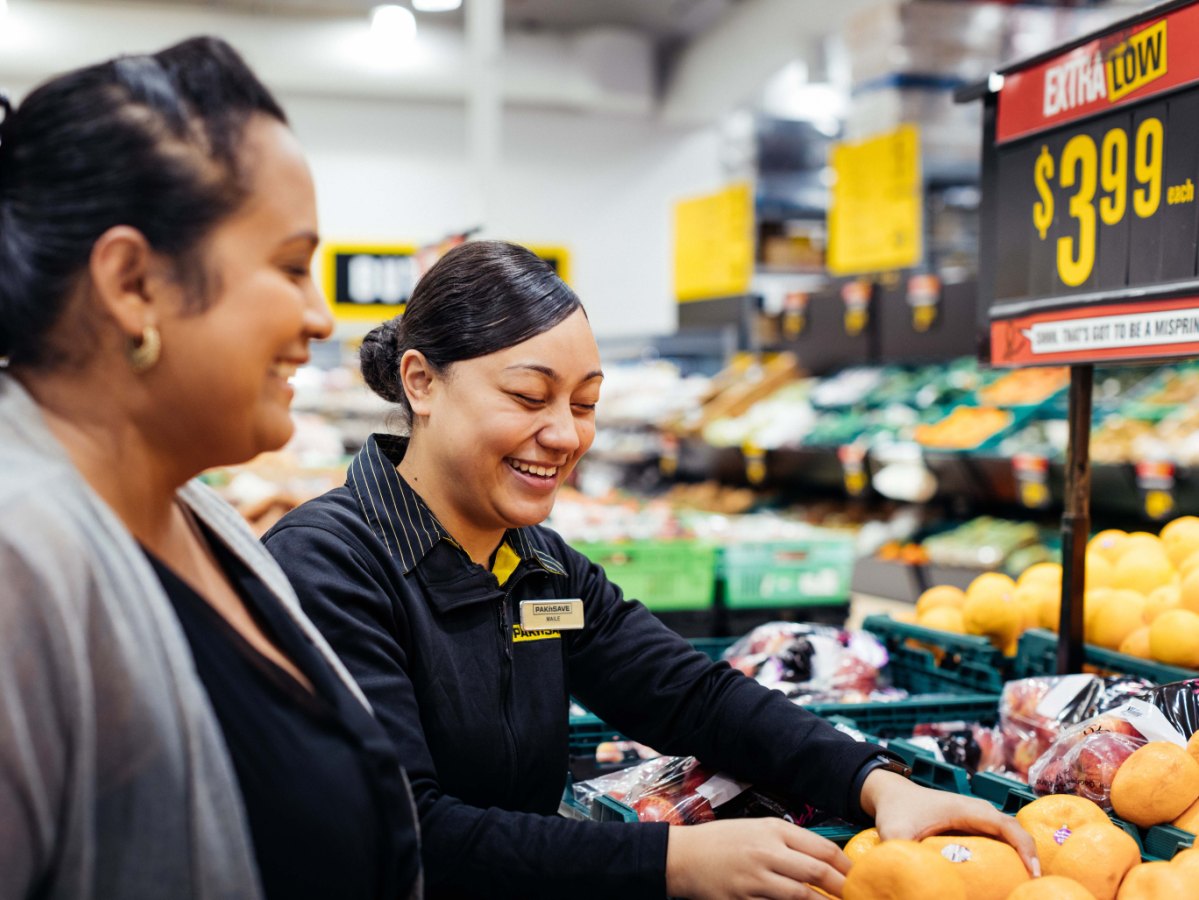In their third monthly update, grocery stores in the Foodstuffs co-operatives have held food price increases below inflation for the third consecutive month, despite the latest Stats NZ Food Price Index (FPI) showing food price inflation rising again in July at 7.4%.
The Foodstuffs North Island and South Island co-operatives are owned by their 460 members – grocers who operate their own individual local stores under the New World, PAK’nSAVE, and Four Square brands around New Zealand.
The Stats NZ Food Price Index (FPI) found that in July the weighted increase of food prices on the FPI basket of goods was 7.4%. The average cost price increase to Foodstuffs from suppliers over the same basket of products in the month of July was 6.8%.
The price of the same basket of goods measured in the Stats NZ Food Price Index increased by an average of 5.9% for customers shopping at PAK’nSAVE, New World and Four Square in July, meaning Foodstuffs stores held food price increases 1.5% below inflation and 0.9% less than supplier increases.
Foodstuffs NZ Managing Director Chris Quin, said record inflation, which hit a 32-year high in the June quarter is impacting customers with over half saying they are just getting by or struggling to make ends meet.
“Our customers are changing the way they shop in response to inflationary price pressures. Almost half say they are cutting back on non-essential items. 1 in 3 are shopping around for the best deals, switching to cheaper brands and house brands or eating out less.
“We’re doing everything we can to help ease the pressure on household budgets at the checkout. Our Price Rollback has saved New Zealanders over $10 million, and held retail price increases below food price inflation for the last three months in a row.
“Making sure our customers can find the best value for their budget on our supermarket shelves means buying well to get products at a fair price for customers, and running our stores and supply chain efficiently to keep costs down in the business.”
While New Zealand is yet to see a peak in the FPI here, the Global Food Price Index measuring key commodities like sugar, oils, meat and cereals has declined for four consecutive months, but remains 13% up on July 2021 after hitting 30-year highs in March.
Quin says while it’s good to see a downward trend in international food prices, the pressures pushing up the cost of growing, manufacturing and retailing groceries in New Zealand are still flowing through the food supply chain here with cost increases from suppliers to Foodstuffs across all products in the supermarket at 7.9%.
Quin said fruit and vegetables are always a key driver of overall grocery costs particularly in the winter months, but the cost of buying fruit and vegetables from suppliers was up 16% in July. The cost of butchery and seafood goods have also been rising considerably, up more than 9% each over the last year.
Earlier this week the Infometrics-Foodstuffs New Zealand Grocery Supplier Cost Index (GSCI) was released, which measures the change in the cost of all grocery goods charged by suppliers to the Foodstuffs North and South Island cooperatives.
The Index utilises detailed Foodstuffs NZ data, across over 60,000 products, to track what it costs the co-operative to buy the goods to put on shelf, which is the major component of grocery prices.
The Index showed a record increase in the costs of goods from suppliers 2022. More products are increasing in cost, and with larger rises, according to the analysis. “The number of items from our suppliers increasing in cost in July 2022 is more than double the number of items back in July 2019, prior to the pandemic.
“Cost increases requested by suppliers are also becoming larger, with 8.8% of all items that went up in July 2022 increasing by 20-80% – well above the 7.2% recorded in July 2019.”
Quin said there are some green shoots on the horizon with the latest inflation rate out of the US lower than expected and global food and fuel prices coming off record highs. “But inflation at these levels and its ongoing impact is still very tough and will be for some time, so we have to keep fighting inflation on the shop floor and at the stockroom door.”
In May, retail prices to Foodstuffs’ customers increased 4.7%, 2.1% less than food price inflation of 6.8% and supplier cost price increases of 6.9%.
In June, retail prices to Foodstuffs’ customers increased 5.5%, 1.1% less than food price inflation of 6.6% and supplier cost price increases of 6.8%.
The numbers
• Stats NZ Food Price Index (FPI) found food prices increased 7.4% for July 2022 compared to a year ago
• In July 2022, the average supplier cost price increase to the Foodstuffs co-operatives on the same products measured in the FPI basket was 6.8%
• On the same products, the increase to Foodstuffs’ customers was 5.9% – meaning the co-operatives’ members held prices in their stores at 1.5% less than inflation in July
• The Foodstuffs co-operatives are responsible for 19c of every retail dollar on the shelf at PAK’nSAVE, New World and Four Square stores, which covers wages, costs, and provides post-tax profit of 4c.
• The largest component of shelf prices is the price Foodstuffs pays suppliers for goods – 68c in every dollar.



